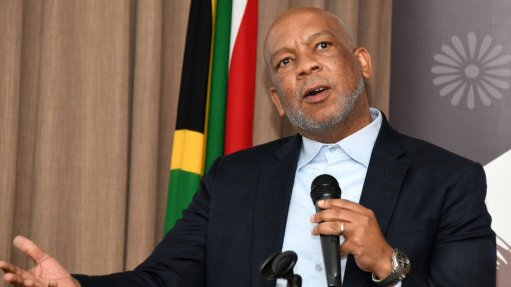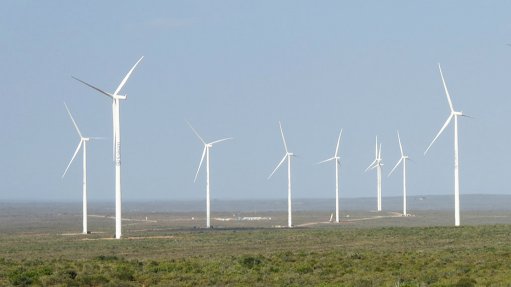Carbon pricing idea gaining steam as global leaders recognise climate risks
In three years’ time, the vast majority of global carbon dioxide (CO2) emissions will come from jurisdictions with carbon pricing, as more former sceptics reinvent themselves as contributors to the carbon pricing infrastructure of the future and global leaders recognise the risk that climate change poses to the world economy.
This is according to advisory firm Promethium Carbon, which recently published its ‘Carbon Pricing Scenarios July 2013’ report.
South African is set to join others such as Australia, Japan and India by phasing in a car- bon tax from January 1, 2015, as part of the country’s efforts to mitigate the effects of climate change and encourage energy efficiency measures.
Promethium director Robbie Louw says a reasonable carbon price for South Africa, which emits 540-million tons of carbon each year, would be R100/t. Director Harmke Immink adds that this rate will allow many carbon reduction projects that local firms have to pull the plug on, as they are not viable, to start up again.
The National Treasury specified in a May 2 policy paper a carbon tax rate of R120/t of CO2-equivalent emissions, increasing at 10% a year during the first phase, from 2015 to 2019.
“Although the international carbon market remains in a weak state of repair, at least three-quarters of global gross domestic product (GDP) will, by 2015, be generated in an econo- mic framework that places a price on carbon,” Louw states.
He further notes that distortion of inter- national trade is resulting from the increasing weight of carbon as a recognised global liability.
“Developments in carbon pricing, therefore, imply a complex mixture of risks and opportunities from the basis of new climate leadership and cooperation among unexpected allies.”
Among these are the European Union (EU) and Australia that have agreed on full harmonisation of emissions trading by 2018. Also significant is the forthcoming carbon-pricing link in California, US, and Quebec, Canada, by 2014.
Louw states that new leaders are emerging from among previously unlikely candidates, with the US and China increasingly playing a leading role in addressing climate change, despite the US’s failure to ratify the Kyoto Protocol and the rapid development of coal-fired power plants in China.
He adds that an important development in the global carbon market is the increasing disconnect between the rapid deceleration of the United Nations Framework Convention on Climate Change (UNFCCC) process and the accelerating development of local and regional carbon markets.
Louw says development and cooperation among localised carbon initiatives have overtaken the UNFCCC as the primary driver in the race to curb emissions.
“With UNFCCC progress effectively stalled until 2020, the drive towards global carbon pricing rests increasingly in the realm of local- ised initiatives, be they the market-based emissions trading scheme (ETS), offsets, new market mechanisms or nonmarket in nature, such as a carbon tax. Numerous carbon pricing initia- tives are at various states of implementation across the globe and many have the potential to interlink and generate additional benefits,” he puts forward.
Louw states that the increasing role of ‘bottom-up’ carbon pricing is a highly visible development on the global economic horizon. Aside from the world’s largest ETS, the EU ETS, national or subnational schemes are already in operation in Australia, Japan, New Zealand, the US, China and Canada, with more planned in South Korea and Brazil.
Further initiatives, such as efficiency and certificate trading, fossil fuel subsidy removal and renewable-energy support structures are similarly multiplying from the ground level up.
“Beyond a reversal of the top-down UNFCCC-led approach to climate change, we are also witnessing a policy reversal among key players in the carbon space on a macro level. More and more former climate sceptics across the spectrum of nations’ corporations and institutions are reinventing themselves as like-minded contributors to the carbon-pricing infrastructure of the future,” he highlights.
Comments
Press Office
Announcements
What's On
Subscribe to improve your user experience...
Option 1 (equivalent of R125 a month):
Receive a weekly copy of Creamer Media's Engineering News & Mining Weekly magazine
(print copy for those in South Africa and e-magazine for those outside of South Africa)
Receive daily email newsletters
Access to full search results
Access archive of magazine back copies
Access to Projects in Progress
Access to ONE Research Report of your choice in PDF format
Option 2 (equivalent of R375 a month):
All benefits from Option 1
PLUS
Access to Creamer Media's Research Channel Africa for ALL Research Reports, in PDF format, on various industrial and mining sectors
including Electricity; Water; Energy Transition; Hydrogen; Roads, Rail and Ports; Coal; Gold; Platinum; Battery Metals; etc.
Already a subscriber?
Forgotten your password?
Receive weekly copy of Creamer Media's Engineering News & Mining Weekly magazine (print copy for those in South Africa and e-magazine for those outside of South Africa)
➕
Recieve daily email newsletters
➕
Access to full search results
➕
Access archive of magazine back copies
➕
Access to Projects in Progress
➕
Access to ONE Research Report of your choice in PDF format
RESEARCH CHANNEL AFRICA
R4500 (equivalent of R375 a month)
SUBSCRIBEAll benefits from Option 1
➕
Access to Creamer Media's Research Channel Africa for ALL Research Reports on various industrial and mining sectors, in PDF format, including on:
Electricity
➕
Water
➕
Energy Transition
➕
Hydrogen
➕
Roads, Rail and Ports
➕
Coal
➕
Gold
➕
Platinum
➕
Battery Metals
➕
etc.
Receive all benefits from Option 1 or Option 2 delivered to numerous people at your company
➕
Multiple User names and Passwords for simultaneous log-ins
➕
Intranet integration access to all in your organisation


















